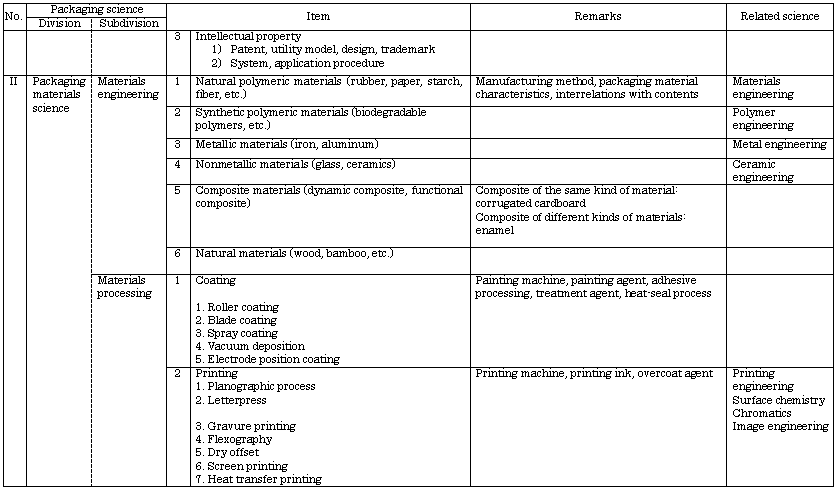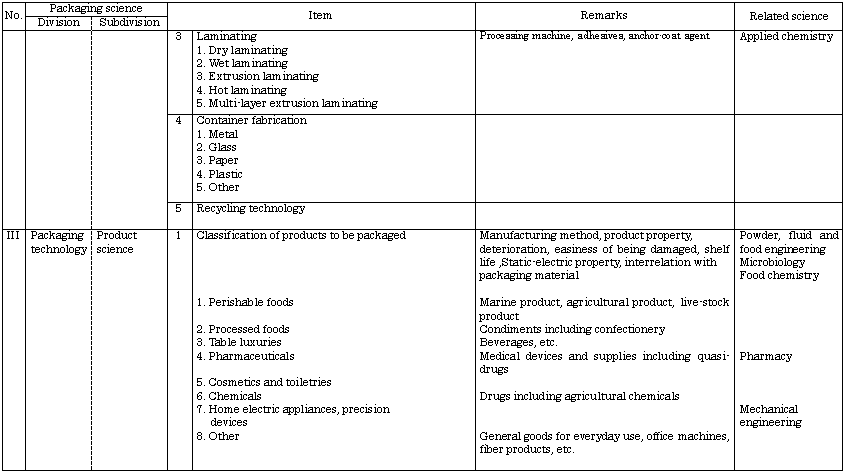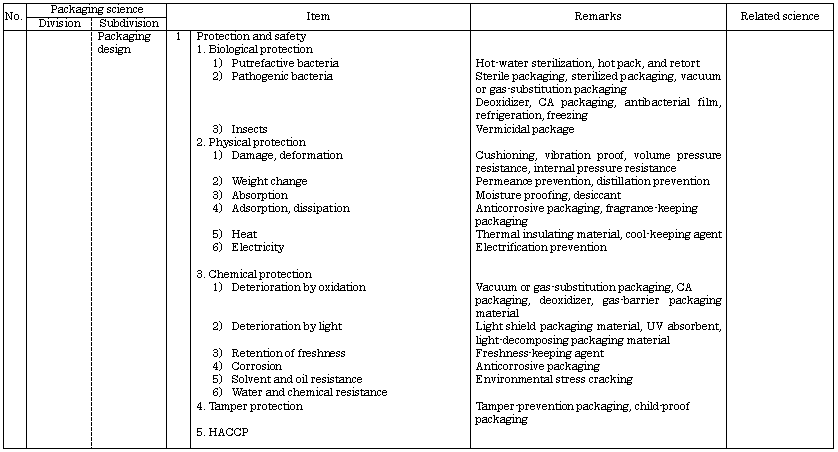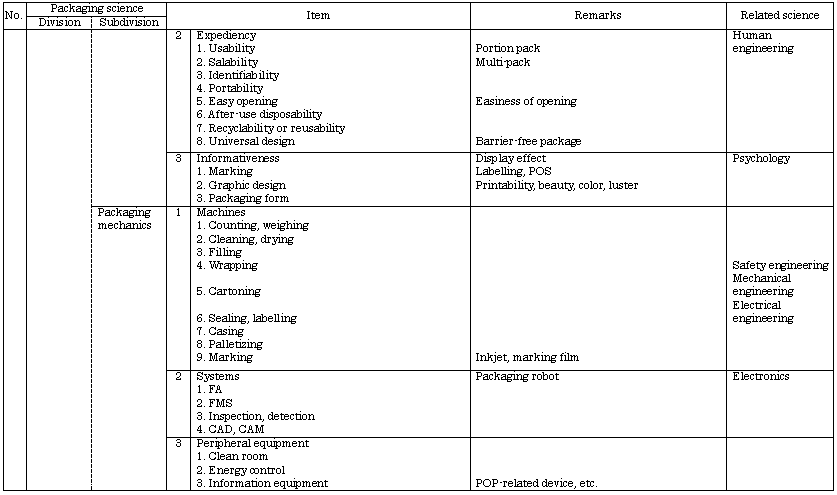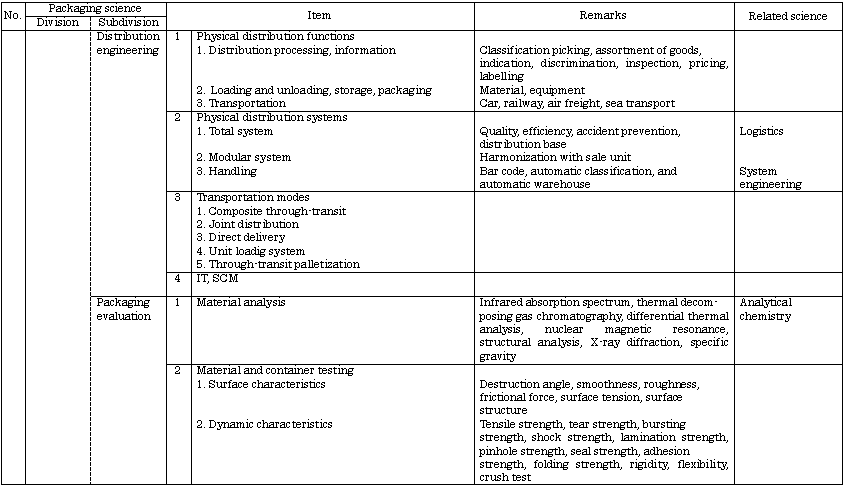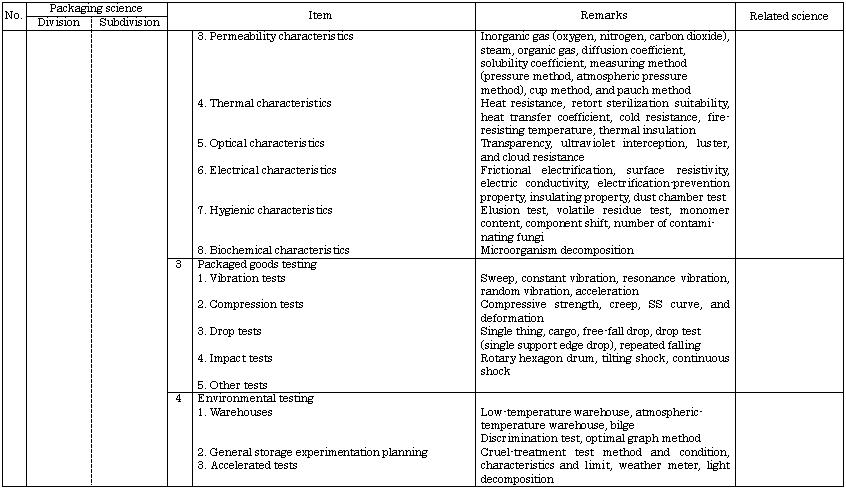
A Proposal for Packaging in the 21st Century
ü@
Realization of Packaging Contributing to a Sustainable Society
ü@ü@The Japan Packaging Institute published their "Establishment of a Packaging
Science System and Proposal for a Packaging Charter" for the packaging
industry in 1993. In 1994, we carried this proposal a step further and published
a "Packaging Charter" for all people and enterprises engaged in packaging
to ethically review the roles of packaging and reconsider adaptability of packaging
to society and the environment.
ü@ü@This "Packaging Charter" specifically outlines the steps and measures
necessary for enterprises, consumers, academic societies, and others to make
packaging more helpful for improving our lives. This has been supported by many
people engaged in packaging. We have also obtained support from a great many
people concerned with packaging abroad who are mainly in the U.S.A. and European
countries.
ü@ü@Six years have passed since that proposal was published and the packaging
environment has greatly changed including the complete enforcement of the Law
for Promoting the Sorted Collection and Recycling of Containers and Packaging
(Recycling Promotion Law) and the advancement of information technology (IT).
ü@ü@Given these circumstances, the Japan Packaging Institute has reviewed the
contents of the "Packaging Charter" published six years ago, and created
a new proposal "Realization of Packaging Contributing to a Sustainable
Society" to everyone who will be engaged in packaging in the 21st century.
ü@ü@In this proposal which was prepared in cooperation with supporters of the
Japan Packaging Society, we specifically refer to the basic ideas in the "Packaging
Charter" and to the roles of the charter in various sectors on the basis
of the Packaging Charter. We have also reviewed the system of packaging science
which is made up of the three major fields of packaging sociology, packaging
material science, and packaging technology.
ü@ü@The social needs for packaging have been increasing, and it is desirable to
educate more highly capable people in packaging. Everyone is required to ethically
respond to a variety of problems for developing a sustainable society in the
future. We believe that this proposal "Realization of Packaging Contributing
to a Sustainable Society" will be again supported by many people who are
engaged in packaging. At the same time, we shall be happy if this is understood
and approved by those concerned.
October 2000
Japan Packaging Institute
ü@
A Proposal for Packaging in 21st Century
Realization of Packaging
Contributing to a Sustainable Society
Japan Packaging Institute
1. Introduction
ü@ü@To preserve our environment, a handbook entitled "Good Packaging Practice"
was published by Japan Packaging Institute in 1972 to show the guidelines for
ideal packaging. Since then, efforts for proper packaging have been made in
individual sectors, but environmental problems, including much waste material
due to excessive use of conventional forms of packaging for mass production
and consumption, have continued to surface. We re-examined the relations between
people and packaging to solve these problems, and proposed a "Packaging
Charter" for the first time in 1994.
ü@ü@The social environment surrounding packaging has undergone a marked change
since then, leading to the enforcement of the Law for Promoting the Sorted Collection
and Recycling of Containers and Packaging (Recycling Promotion Law), and start
of the real recycling society. Consumer concerns about the quality and safety
of products have increasingly grown with the establishment of the Product Liability
Law (PL Law) as a turning-point. Enterprises have actively carried out HACCP
and obtained the ISO 9000 accreditation in order to respond to the movement
for the borderless international economy, such as the establishment of the World
Trade Organization (WTO). Also, the industry, government, and academic society
have jointly started to address the problems of environmental hormones and dioxin.
Efforts for creating a high welfare society have been made in individual sectors,
and, in the packaging sector it is also required to develop barrier-free packaging
that is acceptable to every one.
ü@ü@The advancement of information technology (IT) is radically changing the conventional
values and lifestyles of people. This seems to greatly affect packaging in combination
with the change of all the transaction costs for distribution.
ü@ü@Accordingly, we have decided to review the Packaging Charter published six
years ago and to propose "Realization of Packaging Contributing to a Sustainable
Society" as a criterion of activities for these new times.
2. Basic idea of this proposal
ü@ü@It is the common desire of human beings to create a sustainably developing
society with a lighter load on the environment where everyone has an equal opportunity
to be helped by the welfare society. All people must make efforts to create
such a society.
ü@ü@Therefore, manufacturers, consumers, and people concerned with packaging want
to contribute to creating such a society through packaging. There are many problems
with packages today that must specifically and rapidly be dealt with including
environmental protection, product liability, and barrier-free packaging (universal
designs). It is also important for the people engaged in the packaging industry
to increase their concerns about and understanding of packaging, and to act
in cooperation with each other. They must overcome the problematic issues concerning
packaging through specific actions and make efforts for packaging to contribute
more and more to improving our lives.
ü@ü@In order to fulfill this purpose, the people in the packaging industry must
recognize anew what the essence of packaging is. They must ceaselessly think
of packaging that respond to our social environment. The fundamental functions
of packaging were originally to preserve products, prevent them from being damaged,
reduce energy costs in the distribution process, provide expediency such as
rationalizing distribution, and convey information by means of, for example
the quality labelling system. Today, the demands on packaging have been further
expanded to increase the utility of goods in order to contribute to improving
people's lives. At the same time, a wide range of material technology and scientific
technology related to logistics and relevant areas has advanced even further,
resulting in creating a great number of original ideas and designs. On the other
hand, the volume of packaging waste, and the consumption of resources and energy
cause problems that we must solve. There are also packages that deceive the
quality and quantity of products, and do not sufficiently manage issues related
to disabled persons, the aged, infants, and others.
ü@ü@All these things being taken into consideration, packaging must be examined
against with the following criteria and be adapted to meet these criteria.
ć@ü@Designed to minimize its load on the environment.
ćAü@Designed with care suitable for the people who use them.
ćBü@Perform necessary functions such as protection, preservation, and logistics of the products.
ćCü@Not excessive in the quality and volume of material for the products to be packaged.
ćDü@Total costs including environmental costs and welfare costs held to a minimum.
ü@ü@Taking these criteria into consideration, the people in the packaging industry, as part of the people living in our world, must act ethically and in a socially responsible manner in their packaging activities.
3. Roles of people in the packaging industry in individual sectors
1) Roles of enterprises
ü@ü@Under the principles of this proposal, all enterprises related to packaging
including the manufacturers, those engaged in processing, distributors, and
sellers of goods, packaging materials, and containers, must actively undertake
the following tasks.
(1) Establishing operational policy in enterprises
The enterprises must establish operational policies for promoting proper packaging satisfying the five criteria mentioned in the Packaging Charter, aiming at establishing a recycling society responding to the environmental problems of the earth.
(2) Preparing and maintaining in-company systems
One social responsibility for enterprises is that they must actively collect and respond to the information in international treaties; the laws and regulations of the local, prefectural, and national governments; and the self-imposed standards of industrial organizations. Then, enterprises must set up special internal sections or committees with people in charge, such as packaging specialists and packaging controllers who are able to reliably respond to these laws, regulations, and standards.
(3) Establishing an assessment system for proper packaging
The enterprises must establish an assessment system for making sure that packages are appropriately provided with necessary functions that they should perform; laws, regulations, standards, and criteria are observed; the environmental problems of the earth and barrier-free packaging (universal designs) are adequately considered and examined; and other necessary steps are taken, at the stage of developing the packaging goods.
(4) Active efforts in research and development
The enterprises must devote themselves to research and development of new packaging. This includes packaging materials, containers, and systems contributing to improving the global environment; packages and containers easy for the aged and disabled to use; and new packaging technology to more efficiently use the packaged contents.
(5) Symbiosis with society and international harmonization
The enterprises must cooperate with the government offices, local authorities, related industries, and consumers to actively create a social system where proper packages can be promoted, and packaging wastes can be easily sorted in accordance with the indications on packages. In addition, the enterprises must comply with the international standards (global standards) for packaging, vigorously cooperate with other nations for international harmonization of packaging in order to popularize appropriate packaging globally, and make efforts to make packaging really useful for human beings.
(6) Education and PR activities
The enterprises must educate their personnel to thoroughly incorporate the principals and actions of the Packaging Charter in their businesses. At the same time, they must cooperate with other related organizations to help consumers to know and understand the principles of the Packaging Charter.
2) Consumer roles
(1) Improve consumer consciousness about packaging
ć@ü@Consumers should be conscious of the creation of good packaging.
ćAü@Consumers should be conscious of reviewing the practices and ideas of packaging.
(2) Attention to selecting goods
ć@ü@Consumers should not be mislead by packaging in selecting goods.
ćAü@Consumers should not buy goods whose packages seem to be excessive or extravagant.
ćBü@Consumers should select goods with appropriate indications on the packages.
ćCü@Consumer should buy goods that use recyclable or reusable packaging containers.
(3) Cooperation for reusing and recycling resources
ć@ü@Consumers should actively cooperate with industry so that reusable packaging materials and containers are actually used again.
ćAü@Consumers should actively cooperate with industry in recycling used, unnecessary packaging materials as resources.
3) Roles of educational institutes including universities and research
institutes
(1) Popularizing packaging education
In the light of the social and cultural importance of packaging, packaging education including its significance and roles should be carried out in schools. The education should be extended to include the proper disposal of used, unnecessary packaging materials and containers; how to recycle them; and the importance of preserving the environment of the earth.
(2) Educating packaging engineers and improving their quality
A department or curriculum of packaging studies should be set up in universities and other places to educate packaging engineers and improve their quality.
(3) Active studies in the basics and application of packaging
ć@ Packaging science should be established as a scientifically supported domain of learning.
ćA Results of studies in the basics and application of packaging materials should be fed back to society.
ćB Total life-cycle assessments of packaging materials should be carried out to clarify the scientific evidence of environmental problems due to packaging.
ćC Cooperation among industry, government, and academic society should be strengthened to carry out studies of packaging to assist the entire packaging industry.
(4) The renovation of packaging technology should be promoted with international exchanges in packaging studies and technology and the preparation of information bases.
ć@ The basis in studies of packaging should be prepared by exchanging information utilizing information technology (IT) and by establishing data bases.
ćA International support should be provided for packaging education and studies.
ćB International academic meetings, seminars, and similar opportunities should be conducted to improve the level of studies and promote the international exchange of studies.
4) Roles of related organizations
(1) Packaging-related organizations
ć@ Barrier-free packages (universal designs) should be actively promoted.
ćA PR activities of the Packaging Charter should be aggressively carried out at home and overseas.
ćB Self-imposed controls aimed at creating appropriate packaging should be aggressively promoted.
ćC Programs should be planned for establishing new departments (or courses of study) and setting up a standing curriculum for packaging education in institutes of higher education including universities, and efforts should be made to carry out these programs.
(2) Consumer-related organizations
ć@ The Packaging Charter should be communicated to consumers so that they can understand and follow it.
ćA Various efforts should be made to rationalize packaging.
(3) Government offices and local authorities
ć@ Substantial measures for rationalizing packages should be taken.
ćA International harmonization of packaging-related standards should be promoted.
ćB Support should be given to developing countries to improve their level of packaging technology.
ü@


